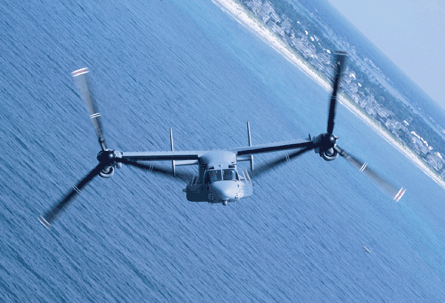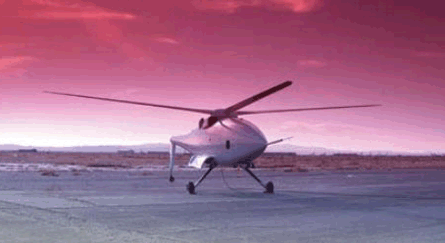Stage lengths of between 185km (100nm) and 1,850km create a competitive problem for conventional air transport. For a typical 1-2h flight, would-be airline customers must pass through a non-flying gauntlet, from commuting to and from remote airports to facing clogged lines for security, check-in and baggage claim. It is often easier and cheaper to drive.
This basic conundrum has produced a series of radical solutions by aviation entrepreneurs, ranging from exotic business models, such as air taxis, to exotic aircraft designs, such as vertical take-off and landing (VTOL) airliners. For various reasons, including lack of infrastructure and technical complexity, none is yet to topple the imperfect primacy of the fixed-wing turboprop or jet.
Now Abe Karem, a widely respected aerodynamicist and innovator, has entered the mix. As founder of Karem Aircraft, he has quietly launched a new programme called the TR53 AeroTrain, a 120-seat, optimum speed tiltrotor (OSTR) dedicated to solving the 185-1,850km air transport problem.
"As the urban and suburban environments develop, VTOL transport is becoming more attractive and more urgent," Karem says.
 |
|---|
© Karem Aircraft |
LARGE GAPS
"The dream [of a VTOL airliner] didn't materialise because of large gaps between efficient fixed-wing transports such as the Boeing 737 and all previously proposed VTOL transports in fuel efficiency, safety record, cruise speed, cruise altitude and pressurisation," he says. "OSTR is designed to substantially close all of these gaps. Our commercial design is the TR53, the closest aircraft to a 'VTOL 737' we know how to design."
Since launching the programme last year, Karem Aircraft has started to acquire and build pieces of the TR53's advanced propulsion system, starting with the rotor and transmission.
"The AeroTrain development plan is focused on designing, analysing and testing the elements of the aircraft that are most different from the existing aircraft inventory," Karem says.
The TR53 would share a similar fuselage with the 737-600, with a 32m (106ft) length and 3.96m cross-section accommodating six-abreast seating.
The most visible difference involves the design of the propulsion and aerofoil. Instead of a pod-mounted turbofan on a straight low-wing, the TR53 would feature two, 16m-diameter tiltrotors on either side of the fuselage on a 34.5m-span high-wing with dihedral wingtips.
But that is not the TR53's only departure from conventional narrowbody technology. The primary structure for the fuselage and wing would be composite, a potential first in the narrowbody class. The aircraft also would have fly-by-wire controls.
INITIAL POWER
The TR53 would initially be powered by the 6,200shp (4,620kW) Rolls-Royce AE1107C engine, which powers the Bell Boeing V-22 Osprey. But Karem has plans to integrate an undisclosed, "advanced" propulsion system optimised for the TR53's unique, optimum-speed technology. The advanced system would "provide significantly enhanced performance", Karem believes.
 |
|---|
© Bell Helicopters |
The TR53 is the commercial spin-off of Karem's OSTR technology. Meanwhile, the US Army is also funding a Karem Aircraft/Lockheed Martin team to design the TR75, an OSTR with a 23m-diameter rotor to haul cargo. An advanced engine produced to support the army's Joint Heavy Lift (JHL) programme, if funded, may carry over to the civilian programme.
As the designer of the fixed-wing General Atomics Predator and rotary-wing Boeing A160 Hummingbird unmanned aerial vehicles, Karem has built a reputation over the past two decades as one of the US military's most technically agile and operationally successful innovators.
Karem is also fully aware that the puzzle of making VTOL transport as easy, safe and efficient as fixed-wing flight has never been solved.
"Fairey, a small British company, made the first serious effort with the 42-passenger, 180kt [333km/h] Rotodyne. The Boeing 222 and Lockheed designs also fed this dream," says Karem.
Fairey cancelled the Rotodyne programme in 1962. The VTOL aircraft was doomed by its relatively slow cruise speed and the comparatively inefficient combination of a tip-jet driven rotor and twin propellers for vertical and horizontal propulsion. Military and airline orders were promised, but sales never materialised and the UK government withdrew funding support.
Karem's tiltrotor configuration is a seemingly unlikely approach to succeed where Fairey failed. The V-22 has proved valuable to the US Marine Corps and US Air Force as a uniquely capable transport. But the concept has not been embraced by airlines like previous military-proven technologies, such as jet transports.
According to Karem's approach, that failure is because the V-22 suffers from the same efficiency problem as helicopters. Their rotor speeds are relatively fixed to support vertical flight, leaving them grossly overpowered during cruise.
FUEL CONSUMPTION
As a result, rotorcraft are consuming substantially more fuel during cruise than a jet-powered fixed-wing aircraft. For example, says Karem, available seat-kilometre costs for a Sikorsky S-92 helicopter are more than 10 times greater than for a 737 on a similar journey.
Karem thinks he has solved this efficiency problem by inventing a method to change the rotor speed to support optimal levels for vertical lift and forward flight. OSTR technology also combines a light rotor system with stiff blades to achieve high efficiency over a range of speeds.
"The OSTR is about combining an efficient transport capability with a robust vertical take-off capability. One of the major challenges that must be overcome is the drastically different requirements on the rotor in hover and in high-speed forward flight," says Karem.
"To bridge this gap," he adds, "OSTR uses a variable speed rotor system that can vary RPM [revolutions per minute]. A cruise RPM might be 20-50% of a maximum hover RPM."
Karem has already worked to tackle this problem for helicopters with the A160, a long-endurance UAV helicopter. The A160 features a Karem-designed variable speed rotor system. The A160 has demonstrated unrefuelled flight of nearly 20h, and is perhaps capable of 30h flight.
 |
|---|
© Boeing |
"In the same way that moving from a turbojet to a turbofan increases efficiency, the large-diameter rotor of the TR53 effectively provides a very high bypass ratio," Karem says.
The trade-off for the improved efficiency of a 16.2m-diameter fan, which compares with 1.55m-diameter CFM56 turbofan, is a "small price" for speed. While the 737 typically cruises at Mach 0.8, the normal cruise for the TR53 would be limited to Mach 0.6.
In hover mode, the aircraft consumes fuel at significantly higher rates. But Karem noted that helicopter mode flight should represent a "relatively small percentage" of overall flight time given a well-executed operation. "It should be noted that turbofan engines are particularly inefficient in on-airport operations including taxi, take-off and landing and low-altitude flight," adds Karem.
The extra fuel required to perform hover operations can be offset in cruise, where the engine's higher bypass ratio should yield fuel savings compared with even the most modern narrowbody aircraft. That advantage mean fewer carbon dioxide emissions with even the TR53's initial engines being the Rolls-Royce AE1107C, says Karem.
Reducing nitrous oxide emissions, however, would require a more advanced engine core than offered by the AE1107C, he said. The R-R engine has been designed to power military transports, high-altitude UAVs and business jets, but not commercial airliners.
Karem says that he has not formally started soliciting letters of intent from airlines. And Karem Aircraft has decided not to market or exhibit the aircraft at the Paris air show next month. "However," says Karem, "we feel strongly that AeroTrain will be a game-changer when it comes to passenger transport."
The "game-changing" description is not mere cliche. Technology is not the only barrier for the TR53 concept to be fully realised. It requires the air transport industry and regulatory structure to adapt to an aircraft that does not require airports or even runways.
"To fully capitalise on the new capabilities offered by AeroTrain, airlines will have to think outside the traditional 'airport runway-to-airport runway' box," says Karem. "Eventually, we hope that forward-thinking airlines and transport planners will allow passengers to board an airplane closer to the front door than their current airport, experience fewer delays, and land closer to their destination than they can today."
This may be the catch. Even if Karem can master the technical challenge of proving an efficient tiltrotor, its acceptance could be limited without a radical change in his customer's behaviour.
Karem's military customer has the advantage here. Army officials are motivated to abandon their dependence on airports and runways, which must be obtained and then defended, to move people and equipment long distances.
Source: Flight International



















